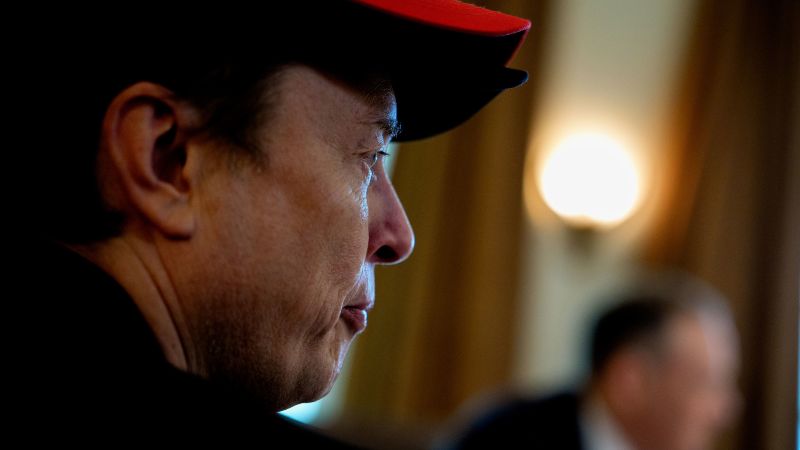In March 2023, Tesla’s board of directors initiated a search for a new CEO to potentially replace Elon Musk, a surprising move given the company’s recent performance challenges. Reports from the Wall Street Journal, citing unnamed sources, reveal that the board consulted several executive placement firms to start looking for Musk’s successor. The specifics of the timeline for Musk’s exit remain unclear, as well as whether the search is still active following recent developments in Musk’s role at Tesla.
The impetus behind the board’s consideration for a CEO change stems from significant struggles Tesla faced in its stock performance. The company’s shares, known by the ticker TSLA, fell sharply—by as much as 45% within the year—before staging a slight recovery amid broader market trends. Tesla recently reported a staggering 71% decline in profits for its first quarter, prompting deep concerns over its direction and leadership. As the company grappled with these issues, Musk was increasingly involved with initiatives under the Department of Government Efficiency, which further complicated his commitment to Tesla.
In light of these challenges, the Tesla board expressed the necessity for Musk to dedicate more time and focus to the electric vehicle manufacturer. Interestingly, Musk complied with the board’s request without opposition, indicating a level of awareness of the company’s precarious position. Subsequently, amidst these tumultuous corporate developments, Musk announced that he would step back from his governmental responsibilities, reigniting questions about his future with Tesla and the ongoing succession planning.
The lack of a clear directive regarding Musk’s potential departure has raised eyebrows, especially since he holds a significant role not only as CEO but also as a board member. It remains unknown whether Musk was kept in the loop about the board’s CEO search efforts. His recent decision to reduce his involvement with the government is thought to align with the board’s desire for a more present leadership figure at Tesla.
In a related setting, Musk recently received gratitude from President Donald Trump during a Cabinet meeting. The president acknowledged Musk’s contributions to government, signaling a friendly relationship that is expected to endure even as Musk steps back. During this meeting, Trump offered encouragement to Musk, alluding to Tesla as a favorable element of the American manufacturing landscape. Meanwhile, Musk humorously touched upon the many “hats” he wears, a nod to his multitasking across various high-profile roles and ventures, including his ownership of Twitter, now rebranded as X.
The dynamics surrounding Musk at Tesla reflect severe internal and external pressures. Days of protests outside Tesla showrooms, signaling waning public support, have compounded the company’s struggles. Once a paragon of sustainable innovation, Tesla has faced reputational challenges that could potentially undermine its dedicated customer base. Analysts have pointed fingers at Musk’s controversial engagements, particularly with far-right narratives and discussions, which could have alienated many of his original supporters who championed the environmental cause.
The turbulent relationship between Tesla and the Trump administration further complicates matters. Musk’s efforts to advocate for lower tariffs on parts essential for manufacturing were met with mixed results, as tariffs were a significant aspect of Trump’s trade policy, which disproportionately affected Tesla’s sales in China. Recently, however, Trump’s easing of auto tariff proposals announced good news for Tesla, potentially alleviating some financial pressure amidst the brand’s overall decline.
In his recent communications with Tesla’s investors, Musk admitted he had faced backlash over his commitment to government initiatives. Effective May 2023, he indicated he would substantially reduce his time spent on government-related matters to better invest time back into Tesla. This realignment raises the question of how much longer he could be willing to continue as CEO, especially after his ambitions for Tesla shift towards a future focused on selling autonomous vehicles.
Musk remains a major shareholder in Tesla, holding 410 million shares, which constitutes approximately 12.8% of the company. His compensation package, under scrutiny for its magnitude, has faced legal challenges, suggesting a significant financial stake as both an incentive and a potential hindrance to stepping back from leadership. The trajectories of Tesla and Musk converge in a critical narrative about corporate governance and strategic vision in the volatile automotive and tech marketplace.
As this situation evolves, both the company and its stakeholders will closely monitor the developments regarding Musk’s future role and the board’s decisions in steering Tesla through its current dilemmas and towards a more stable future. The complexities surrounding leadership change in a high-profile company like Tesla underscore the broader themes of evolving corporate governance norms and the challenges of managing dual roles in both the business and political spheres.



